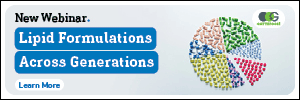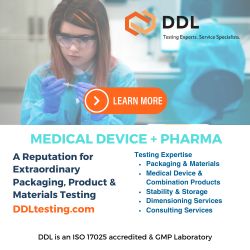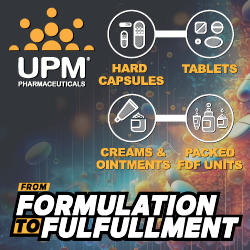Functional Excipients
Roquette Completes the Acquisition of IFF Pharma Solutions
Roquette recently announced the successful completion of its acquisition of IFF Pharma Solutions. This strategic milestone marks a significant step forward in its ambition to…
SPECIAL FEATURE - Bioavailability & Solubility: The Promise of Novel Ingredients
Contributor Cindy H. Dubin, speaks with several innovating companies to discuss the use of novel excipients as well as other methods and technologies for tackling bioavailability and solubility once and for all.
ORAL DOSAGE FORMS - The Future of Oral Dosage: Innovations, Challenges & the Path Forward in 2025
Sébastien Croquet explores the latest industry challenges, cutting-edge manufacturing techniques, and patient needs defining today’s oral delivery methods, and breaks down some of the ways drug producers can ride, or even define, the next wave of oral drug delivery.
Gattefossé Achieves Key Milestone With New US Plant Certifications
Gattefossé, a leading provider of specialty ingredients and formulation solutions for personal care and pharmaceutical industries, proudly announces the successful certification of its new manufacturing…
WHITEPAPER - Formulating Custom Viscosity Blends With POLYOX™ Polyethylene Oxide
Excipient variability plays a critical role in pharmaceutical product design. A risk-based, scientific approach to Quality by Design (QbD) is essential to ensure consistent drug…
2025 COMPANY PROFILES & CAPABILITIES
For each participating company, this section presents a detailed summary highlighting their core technologies, capabilities, technologies, and services.
Gattefossé Announces Inauguration of its New Premises & Technical Center of Excellence in Mumbai
India is a strategic country for the business development of the Gattefossé Group. To support this growing market, Gattefossé continues to invest in the opening…
CONTROLLED RELEASE - How Advanced Excipient Knowledge is Shaping the Future of Controlled-Release Formulations
Matthias Knarr, PhD, and True Rogers, PhD, review the latest insights behind CR formulations using HPMC excipients and how HPMC substitution specifically can assist formulators in developing cutting-edge CR delivery systems with differentiated performance.
WEBINAR ON DEMAND: Advantages of Carbopol® Polymers in Oral Formulations
In this video, the Lubrizol team together with the IMCD US team takes you through formulation aspects of Carbopol® polymers as well as the results of a case study on an Acetaminophen oral suspension formulation.
WEBINAR - ABISOL Emulsion Preconcentrate Kit & ABISORB-DC Excipient System for Tableting Lipids
ABITEC Technical Business Director, John Tillotson, RPh, PhD, discusses ABITEC’s latest products: The ABISOL Emulsion Preconcentrate kit for the easy formulation of emulsified drug delivery systems and the….
Evonik Starts Operation of New Spray Drying Facility for Pharmaceutical Oral Excipients
Evonik has officially opened a new facility for drying aqueous dispersions of EUDRAGIT polymers at its site in Darmstadt. The new double-digit million-euro excipient manufacturing…
WHITEPAPER - Versatility of Geleol™ Mono- and Diglycerides NF
Geleol exerts different functional roles, depending on the drug, formulation, and the process applied. It may serve as carrier and release modifier for oral formulations and plasticizer in tablet film coating processes. It may be combined with polymers and/or other non-digestible lipids like Compritol®….
WHITEPAPER - Efficient Development of Miniature Drug-Loaded Implants
Drug-eluting implants offer a unique approach to overcoming challenges associated with traditional drug delivery methods. They can provide sustained, continuous release of a therapeutic at…
CordenPharma & Certest: A Powerful Partnership Unleashing the Potential of Patented Ionizable Lipids in LNP Formulation
CordenPharma and Certest have signed a partnership agreement on May 7, 2024, which aims to add ionizable lipids to CordenPharma’s complex LNP formulation services, the missing….
Premium Cell Culture Ingredients From Actylis
Download the Actylis Cell Culture Ingredients brochure to discover our product list or ask for a sample of a specific product…..
Roquette Unlocks the Power of Flexibility With Launch of New Flex Softgel Capsule Shell System
Roquette recently announced the launch of its new LYCAGEL Flex hydroxypropyl pea starch premix for nutraceutical and pharmaceutical softgel capsules. Built on Roquette’s market-first LYCAGEL pea…
WHITEPAPER - Continuous Flow - An Emerging Alternative
In the whitepaper Continuous Flow: An Emerging Alternative, Curia experts discuss how continuous flow chemistry and processing offer an alternative pathway. The paper explores its….
SPECIAL FEATURE - Excipients: Advanced Biologics Require Innovative Excipient Science
Contributor Cindy H. Dubin speaks with several leading companies to discuss novel and functional excipients being developed, the role they will play in reformulations and new formulations, and their versatility in drug delivery.
SPECIAL FEATURE - Improving Bioavailability & Solubility: The Never-Ending Quest
Contributor Cindy H. Dubin speaks with several companies to review their innovative technologies in this annual report on bioavailability and solubility.
Evonik Partners With University of Mainz to Commercialize New Class of PEG Lipids for Nucleic Acid Delivery
Evonik and the University of Mainz have signed a license agreement to commercialize randomized polyethylene glycols (rPEGs), a new class of PEGs. Evonik intends to use….
What are functional excipients?
The global pharmaceutical excipients market was valued at $7.7 billion in 2020 and is expected to reach $11.2 billion by 2026. Functional excipients are witnessing a strong demand as companies supply a wide range of functional excipients that help manufacturers produce cost-effective, high-quality, finished pharmaceutical product. Many industry experts point to a widening demand and use of organic pharmaceutical excipients. These organic excipients include oleochemicals, petrochemicals, proteins, carbohydrates, and others. Additionally, binders and functional excipients are witnessing a strong demand. Regarding delivery route, it is the topical segment that is witnessing fast growth in the global pharmaceutical excipients market, as topical drug delivery is witnessing a significantly stronger progression because of its ability to surpass the metabolism pathways of the stomach and liver.
However, the high cost associated with the drug development process will impede the growth rate of the pharmaceutical excipients market. Additionally, strict government regulations have hindered the pharmaceutical excipients market growth. Safety, quality concerns, and lack of awareness will further challenge the market in the forecast period mentioned above.
This is particularly true for novel excipients, which do have technical, therapeutic, and commercial benefits in oral drug delivery. Despite their formulation-enhancing benefits, novel excipients are sacrificed early in development because of a lack of precedence of use.
Without an independent pathway to allow new excipients or new uses for existing excipients into drug products, except when associated with a drug filing, there are limited tools available for pharmaceutical companies to formulate better performing, and in many cases, life-saving drugs. Meanwhile, drug manufacturers are reluctant to use new excipients and take on the additional layer of scrutiny from regulatory agencies to demonstrate full excipient characterization, safety, quality, function, and appropriateness of use.
Functional Excipients and the FDA
The Food & Drug Administration (FDA) has acknowledged that the lack of novel excipients is indeed a problem. In September 2021, the Agency announced the Novel Excipient Review Pilot Program, which will select and review four novel excipients in the next two years using a new pathway. This will allow manufacturers to obtain an FDA review prior to the use of the novel excipient in a drug formulation.
The FDA’s recent stance and acceptance that the novel excipients are critical in development of new drug candidates, the perceptions around the novel excipients are being changed as the Agency continues to embrace the facts that the pharma industry is in dire need of new excipients for bringing the innovative drugs to the market faster. This is the first time in history that the agency is opening doors for novel excipients to be freely evaluated and used in the innovative formulations for NCEs.
Note, though, that this is not an excipient approval process; the novel excipient would still be evaluated as part of the overall drug product approval. In the next 3 to 5 years, we can expect to see an acceleration in the examination of the composition and purity of excipients.





















